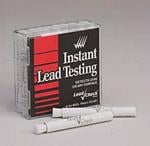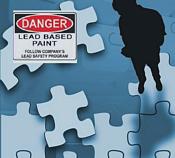For Large RRP Remodels; Renovate or Tear Down and Start Over?
Question from an RRPedia User:

“Shawn, We have met a number of times, most recently at the Rings End event, which was great, informative and overwhelming. I'm not sure where to go for the answer to this question and thought maybe you could direct me. We are bidding a sizable remodel and the architect has note for that bidders are to follow RRP guidelines. Its pre-1978, we will be disturbing 75%+ of the existing structure and it is unoccupied. I'm thinking that we don't need to address the tarping and cleanup because of the magnitude and vacancy. If we do then we need to consider a tear down. Any guidance you can give would be appreciated. I'm sure you get this all the time so I understand if you can't get to it. Best regards, Ray Gaines Sr, Gaines Construction Co. Inc.”
Ray:
Thanks for your message. This question has come up several times already from other contractors like you who are trying to do the right thing and interpret the EPA RRP rule correctly.
The fact that the property is unoccupied during the renovation makes no difference regarding whether the EPA RRP rule applies. This is confirmed on the FAQ page of the EPA web site. Because of the removal of the opt-out provision in July of this year, any residential property where people live or will live (referred to as target housing) now requires the lead-safe practices unless the home tests out negative for lead under the EPA guidelines.
Also under the EPA RRP Rule, unless the entire interior of the structure is gutted down to bare wood, with no coated or painted surfaces remaining, the project must be treated as an RRP project and again the work must be done using lead-safe work practices. A full removal of all exterior finishes however does require the RRP Lead-safe work practices. Again, this is confirmed on the FAQ page of the EPA web site. Keep in mind, all documentation requirements apply as well.
As a side note, your message does say the building is pre 1978; however you do not say whether the property was tested for lead. If it hasn't been tested, one option to the owner would be to test it. Of course, if there is no lead, the rule would not apply.
 The EPA approved test kits sold by LeadCheck are very accurate. These tests reliably determine the presence or absence of lead. If you use these tests the owner would know if any lead is present at all. However, under the RRP Rule, the EPA says the rule exempts renovations that affect only components that a certified lead inspector or certified risk assessor has determined are free of paint or other surface coatings that contain lead equal to or in excess of 1.0 milligrams per square centimeter (mg/cm2) or 0.5% by weight. EPA further explains that the determination that any particular component is free of lead-based paint may be made as part of a lead-based paint inspection of an entire housing unit or building, or on a component-by-component basis.
The EPA approved test kits sold by LeadCheck are very accurate. These tests reliably determine the presence or absence of lead. If you use these tests the owner would know if any lead is present at all. However, under the RRP Rule, the EPA says the rule exempts renovations that affect only components that a certified lead inspector or certified risk assessor has determined are free of paint or other surface coatings that contain lead equal to or in excess of 1.0 milligrams per square centimeter (mg/cm2) or 0.5% by weight. EPA further explains that the determination that any particular component is free of lead-based paint may be made as part of a lead-based paint inspection of an entire housing unit or building, or on a component-by-component basis.
So, if the property owner wants to know if there is any lead at all, the EPA approved LeadCheck test kits could be used to do so. If the owner chooses to use the EPA's action level of lead paint amount to determine if the lead-safe practices would be required, then currently the only way to test for amount of lead would be to use a certified lead inspector or certified lead risk assessor.
 One way to think about this might be to relate it to eating fish. The government often says that if you fish in certain bodies of polluted water, you can safely eat up to so many of the fish you catch without any health concerns. If the government says you can eat up to 3 fish a year, how safe would you feel eating even one fish? Using this analogy, how safe might the owner feel having renovations done if there is any lead present at all at their property?
One way to think about this might be to relate it to eating fish. The government often says that if you fish in certain bodies of polluted water, you can safely eat up to so many of the fish you catch without any health concerns. If the government says you can eat up to 3 fish a year, how safe would you feel eating even one fish? Using this analogy, how safe might the owner feel having renovations done if there is any lead present at all at their property?
If you have opportunity to interact with the property owner, I suggest you might find you would stand out from the other bidders if you could share what I have written here with the owners. It is my opinion that the property owners should know the facts, know their options and then make a decision about how to move forward regarding lead at their homes.
Topics:
RRP Questions,
EPA RRP Lead Rules,
Sales Considerations,
Estimating Considerations,
Health Effects of Lead,
Compliance Options,
Work Practices,
RRP for Dummies,
Containment Considerations,
Lead Test Kits and Testing
 Looking for accurate information about the EPA RRP rule?
Looking for accurate information about the EPA RRP rule? 

 The
The  One way to think about this might be to relate it to eating fish. The government often says that if you fish in certain bodies of polluted water, you can safely eat up to so many of the fish you catch without any health concerns. If the government says you can eat up to 3 fish a year, how safe would you feel eating even one fish? Using this analogy, how safe might the owner feel having renovations done if there is any lead present at all at their property?
One way to think about this might be to relate it to eating fish. The government often says that if you fish in certain bodies of polluted water, you can safely eat up to so many of the fish you catch without any health concerns. If the government says you can eat up to 3 fish a year, how safe would you feel eating even one fish? Using this analogy, how safe might the owner feel having renovations done if there is any lead present at all at their property?


